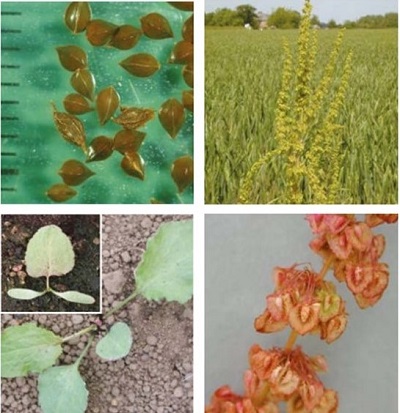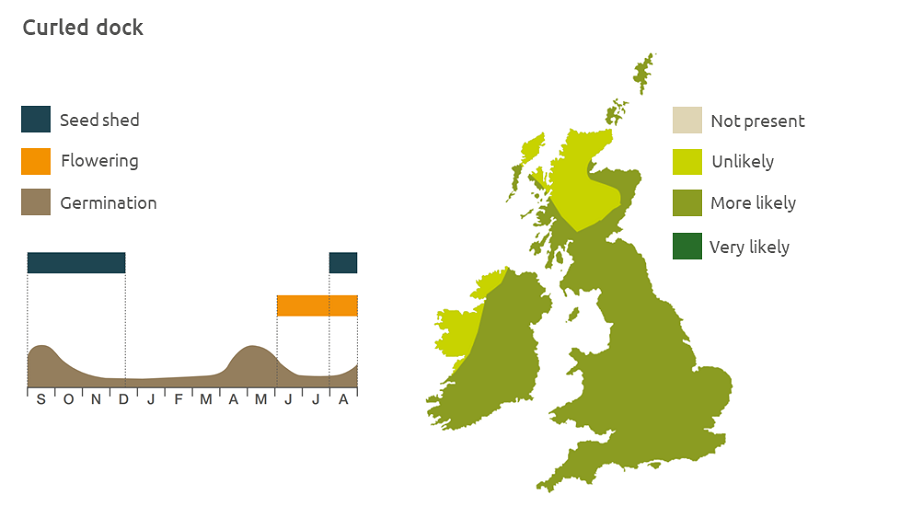- Home
- Knowledge library
- Distribution and biology of curled dock in the UK
Distribution and biology of curled dock in the UK
Curled dock can be an abundant broad-leaved weed on heavy, damp soils. Find out how to identify and control it.
Overview
Curled dock (Rumex crispus) is often abundant on arable land with heavy, damp soils. It is found more frequently in spring than winter crops and can be difficult to control in crops other than cereals. Curled dock can overwinter as a rosette of small leaves; it is the size of this rosette which determines if the plant will flower the following year. Sometimes two crops of seeds may be produced a season. Reproduction is mainly by seed but the plant may produce vegetatively from root fragments.
- It has value to biodiversity
Description
Curled dock is a robust dicotyledon, 50–120 cm tall, though it may grow higher. It has long coarse basal leaves with wavy edges. The flowering shoot has individual flowers with heart-shaped petals in dense clusters.
Key features
Young plant: The cotyledons are more slender than those of broad-leaved dock.
Plant: The leaves are 4–8 times longer than broad, with wavy margins.

Location and life cycle

Geographic distribution
Curled dock is found on verges, wasteland and arable land up to an altitude of 850 m.
Soil type
It likes nutrient-rich and compacted clay loams, and damp soils.
Seed statistics
- Seed longevity: >5 years
- Germination depth: 3 cm
- Seed weight: 2 mg
- Seeds/head: 1
- Seeds/plant: 3,000–40,000
Management
In row crops, routine hoeing or pulling may be required. Control established plants in uncropped land or in grass breaks with suitable herbicides.
For advice on herbicides, please speak with your agronomist or adviser.
When was this information last updated?
This page is based on content from the encyclopaedia of arable weeds publication. Since it was first released in 2008, the publication has been redesigned several times but not revised. However, it remains a good foundation for general information on the distribution and biology of weeds.

